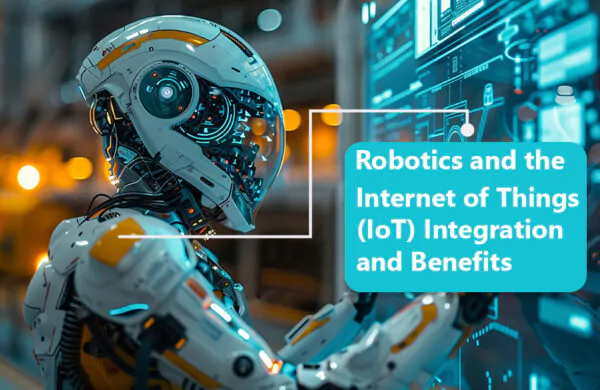In recent years, the integration of Artificial Intelligence in robotics has redefined various industries, paving the way for innovative applications and solutions that were once considered science fiction. Conversely, Artificial Intelligence is the ability of machines to act human-like and reason. AI is the capability of a system to acquire and improve upon knowledge and proficiency from experience and intervene in functions that are otherwise distinctively human-like, for instance, recognizing patterns, deciding on certain operations, or coming up with solutions to certain problems.
Incorporation of AI into robotics engineering means that the robots become part of a new league of machines that possess cognitive abilities in not only thinking but learning and adapting as well, a factor that leads to improvement of the robots as well as improvement of the areas of application of robots.
How AI Enhances Robotic Capabilities
1. Autonomy and Decision-Making
- Another area that was affected by AI is the capability of robotics to make decisions independently. Artificial Intelligence in Robotics helps to assess the environment and a variety of options, and then make decisions based on the data which is acquired by them. This kind of autonomy is especially useful where it is either impossible or impractical to use human action, for instance, in deep sea or space explorations.
2. Learning and Adaptation
- For instance, whereas other usual robots acting as human surrogates need to be pointed at and reprogrammed each time there arises a new task to perform, AI robots use machine learning to perform new tasks. These robots can also be programmed for operations right from basic repetitive activities to solving problems. The institution becomes more efficient and effective over the time they work from the experiences they gather.
3. Perception and Sensing
- Artificial Intelligence in Robotics enhances a robot’s ability to perceive its environment through advanced sensors and computer vision technologies. Such robots can analyze visuals, sounds, and even feel to move and to interact with the environment more efficiently. For instance, it allows robots to be perceptive of objects and people, not to mention, avoid any hindrances, and even decipher people’s moods from their faces.
4. Collaboration and Human-Robot Interaction
- AI employ robots to be synergistic with people. Cobots as these robots are called can be used in almost any work process right from assembly line manufacture to healthcare giving. By using the AI, these robots can interpret the commands given to them by the human beings hence making them useful companions in many organizations.
5. Predictive Maintenance and Self-Repair
- AI is also used in the maintenance and where necessary the self-repair of robots in the industry. With reference to data from sensors, AI is capable of pointing out possible failures, so operators can fix a machine before it actually breaks down, thereby cutting on operating and maintenance expenses. Also, AI technology integrated into robots allows the identification of the robot’s problems and in some instances starting the self-repairing process.
6. Natural Language Processing (NLP)
- This has made robotics and artificial intelligence able to converse with humans using natural language given the enhancements in Natural Language Processing. This capability enables a robot to comprehend speech directions and hence is more adaptable to be operated by customers. For instance in customer service robots with NLP can be programmed to respond to people’s questions and offer some information sparing the need for an operator.
Real-World Applications of AI in Robotics
The combination of robotics and artificial intelligence is already making a significant impact across various sectors:
- Manufacturing: Robots with the help of artificial intelligence are rapidly penetrating into the manufacturing sector as performing assembly work, welding, and controlling the quality of the goods much better and much faster than the people do that.
- Healthcare: In the healthcare chain, robots controlled by artificial intelligence perform surgeries, reintegration of the injured, and even take care of the disabled elderly. Today’s robots are capable of executing intricate manoeuvres that may otherwise be very risky for patients to undergo, with a certain level of accuracy unimaginable by human surgeons.
- Logistics and Supply Chain: Robots are therefore now being deployed in the supply chain by applying artificial intelligence in robots to undertake warehousing and moving of products. These robots are also flexible in that they can easily adjust with the change in demand of a particular product and reduce the overall cost of the supply chain.
The Future of AI in Robotics
AI is bound to feature on robots, but that is just the tip of the iceberg. But as AI technologies progress more powerful robots that are in a position to accomplish tasks that cannot be envisaged in the present day will be developed.
Decades later, social and other human-like robots may appear in our lives with such functions as family helpers, advisors, and performers of many types of complicated work. So, the potential appears to be limitless and organizations such as Monarch Innovation are helping to take robots and robotic systems to a new level.
Conclusion
Artificial Intelligence is undoubtedly enhancing robotic capabilities, transforming machines from simple automatons into intelligent entities capable of complex tasks. Through advancements in autonomy, learning, perception, and human-robot interaction, AI is revolutionizing the field of robotics engineering and mechanical engineering service. Monarch Innovation is playing a key role in this transformation, developing AI-powered robots that are setting new standards for the industry. As we look to the future, the synergy between AI and robotics will continue to unlock new possibilities, making our world smarter, safer, and more efficient.





